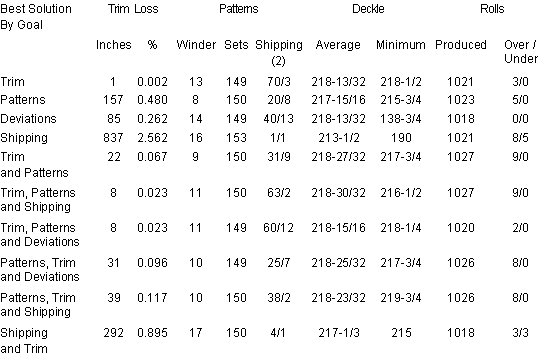matrix Management Consultants
|
One of the advantages of a MICRO TRIM® system is that it is truly a decision-assist workstation. It allows planners to run a problem or set of problems many different ways; until they find a solution applicable for the current operating conditions.
Marketing wants to meet the customers' requested ship dates and accommodate last minute requests for changes. Production wants to minimize setups by reducing the number of patterns. Shipping wants to minimize open orders, meet customer ship dates, maintain continuity by order / item, and control distribution costs. Finishing wants all multi-pack rolls side by side when they arrive at the wrapping station. |
|
Table 1: COMPARISON SUMMARY (1) |

|
1. Detail backup of data and reports are available for all solutions. |